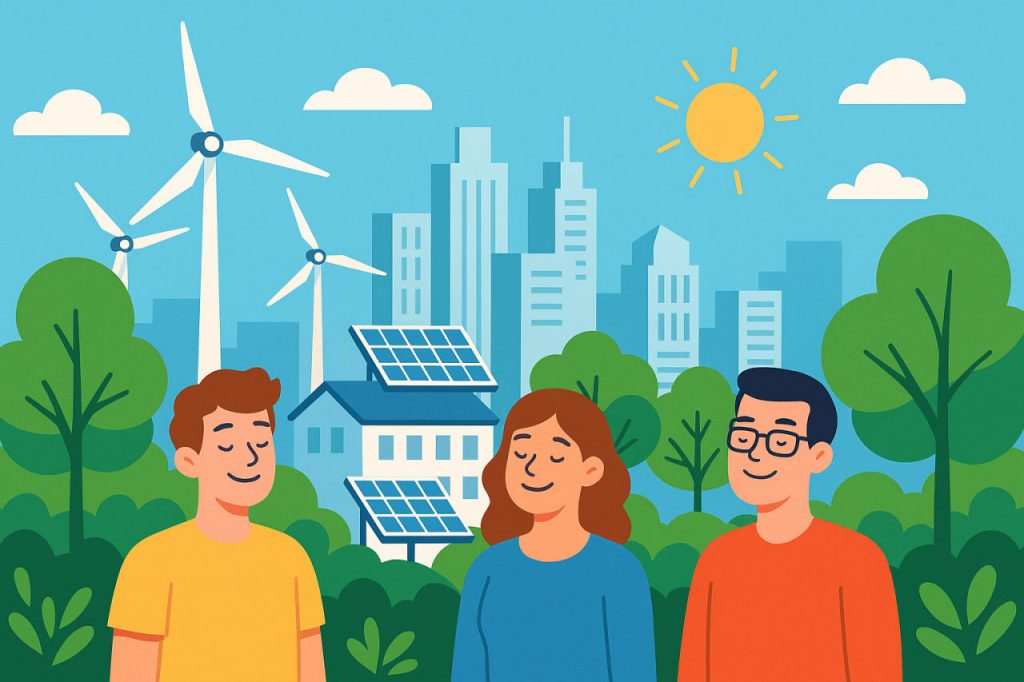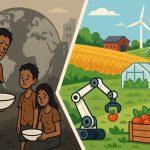Air is the most vital resource on Earth — we can live weeks without food or days without water, but only minutes without air. Yet, despite its importance, clean air is becoming increasingly rare. Industrialization, transportation, deforestation, and the burning of fossil fuels have filled our atmosphere with harmful particles and gases. Achieving clean air for all humanity is both a scientific challenge and a moral obligation, requiring global cooperation, innovation, and responsibility.
The Global State of Air Pollution
According to the World Health Organization (WHO), over 99% of the world’s population breathes air that exceeds safe pollution limits. The main pollutants include fine particulate matter (PM2.5), nitrogen dioxide (NO₂), ozone (O₃), and sulfur dioxide (SO₂). These particles penetrate deep into the lungs, causing respiratory and cardiovascular diseases, premature deaths, and developmental issues in children.
Major sources of air pollution are:
- Vehicle emissions from gasoline and diesel engines.
- Industrial production and coal-fired power plants.
- Agricultural activities, including fertilizers and livestock emissions.
- Deforestation and wildfires, which release massive amounts of carbon and smoke.
- Household pollutants, such as cooking with solid fuels or heating with coal.
Cities like Delhi, Beijing, and Mexico City frequently record pollution levels many times above international safety standards. Yet even rural areas are affected as pollution travels long distances through the atmosphere.
Transition to Clean Energy
The shift from fossil fuels to renewable energy is one of the most effective ways to clean the air. Solar, wind, hydroelectric, and geothermal energy produce no direct emissions, reducing the concentration of harmful gases.
By electrifying transportation and heating systems using renewable energy, countries can drastically cut pollution. Norway, for example, where electric vehicles now make up over 80% of new car sales, has seen significant improvements in air quality in urban centers.
Greener Cities and Sustainable Transport
Urban areas, where most of the world’s population lives, play a key role in achieving clean air. Cities can adopt green urban planning, which includes:
- Expanding public transportation networks and cycling infrastructure.
- Creating low-emission zones where polluting vehicles are restricted.
- Planting urban forests and green roofs, which absorb CO₂ and filter particulate matter.
- Promoting electric buses, trams, and shared mobility systems.
Some cities like Copenhagen and Singapore are already models of sustainability, with clean air policies integrated into daily life.
The Role of Industry and Innovation
Modern industries are embracing clean technologies to reduce emissions. Factories are installing filtration systems, carbon capture technologies, and energy-efficient equipment. Smart factories use AI to monitor air quality and adjust processes in real time to minimize waste and pollution.
Moreover, the development of hydrogen fuel and biotechnological solutions offers new ways to produce energy without harmful byproducts. These innovations could revolutionize heavy industries such as steel, cement, and shipping — some of the largest global polluters.
Reforestation and Nature-Based Solutions
Forests are Earth’s natural air filters. One mature tree can absorb around 22 kilograms of CO₂ per year and produce enough oxygen for two people. Reforestation, urban tree planting, and wetland restoration help purify the air, regulate climate, and support biodiversity.
Protecting and expanding green areas is therefore not just an environmental task, but a public health strategy. Projects like the Great Green Wall of Africa, which aims to restore 8,000 kilometers of degraded land, demonstrate how ecological recovery can improve both air quality and human livelihoods.
Individual and Community Action
Every person can contribute to cleaner air through small but meaningful actions:
- Using public transport, bicycles, or walking instead of driving.
- Conserving energy at home and switching to renewable electricity providers.
- Avoiding open burning of waste or leaves.
- Supporting local green initiatives and community tree planting projects.
Collective responsibility — multiplied across billions of people — creates a powerful global effect.
The Role of International Cooperation
Air pollution knows no borders. A single wildfire or industrial zone can affect neighboring countries thousands of kilometers away. International collaboration through agreements such as the Paris Climate Accord and UN Clean Air Initiatives is essential.
By sharing technologies, setting emission standards, and supporting developing nations in transitioning to green energy, the world can work together toward breathable air for all.
The Vision of a Cleaner Future
In a clean-air future, cities are green and quiet, transportation is electric, and industries are powered by the sun, wind, and water. The sky is clear, lungs are healthy, and children grow up breathing pure oxygen rather than smog. This vision is not a dream — it is a goal humanity can reach through determination, innovation, and unity.
Interesting Facts
- Over 7 million people die annually due to air pollution-related diseases.
- Indoor air pollution kills more people than outdoor pollution in some developing countries.
- Planting 1 trillion trees could absorb roughly one-third of all CO₂ emissions ever produced by humans.
- Switching entirely to renewable energy could reduce air pollution deaths by up to 90%.
Glossary
- PM2.5 — microscopic airborne particles smaller than 2.5 micrometers that penetrate deep into the lungs.
- Carbon capture technology — a process that traps CO₂ emissions before they reach the atmosphere.
- Reforestation — the process of planting trees in areas where forests have been destroyed.
- Renewable energy — energy derived from natural sources like sunlight, wind, or water that can replenish over time.
- Low-emission zone — an urban area where the most polluting vehicles are restricted or banned.


